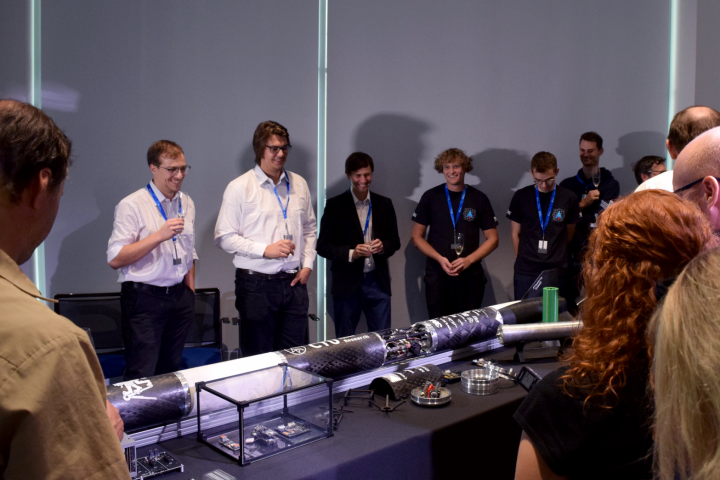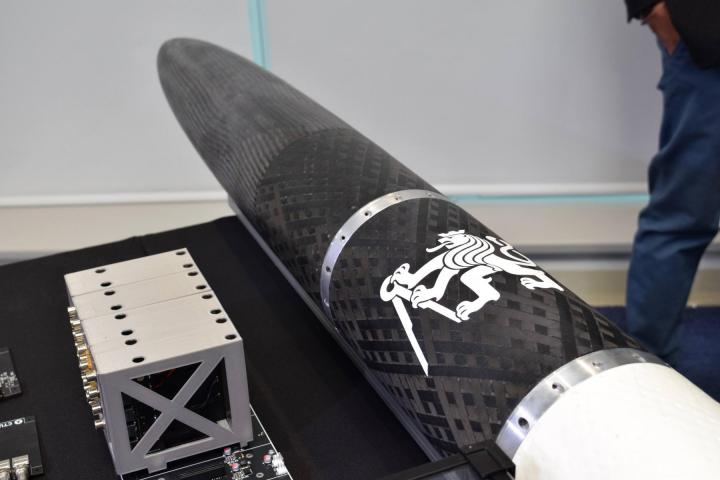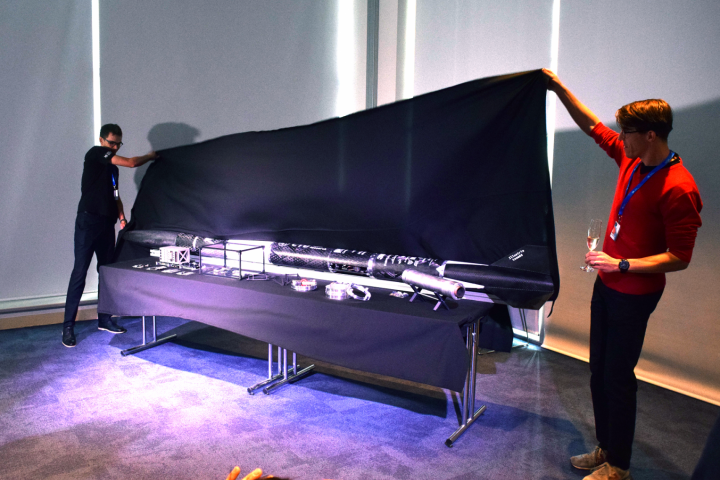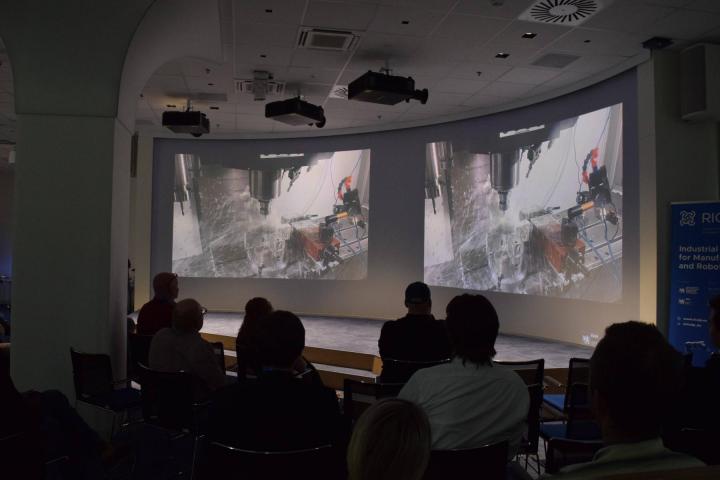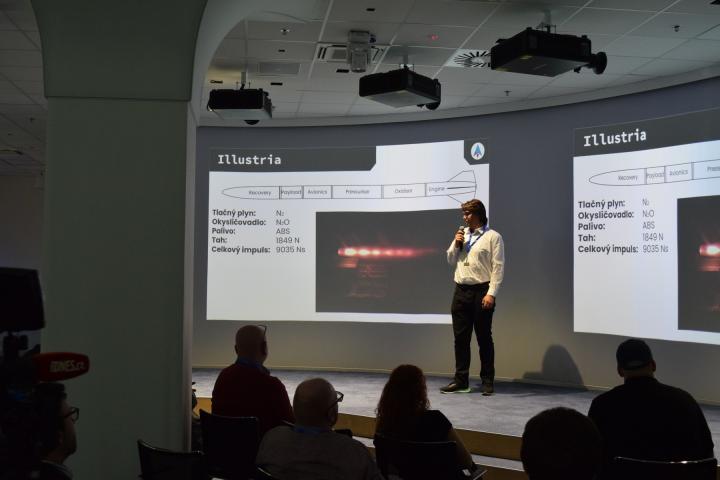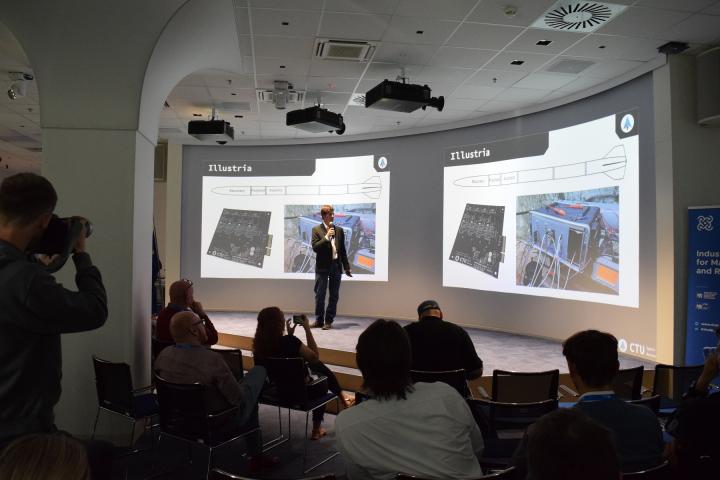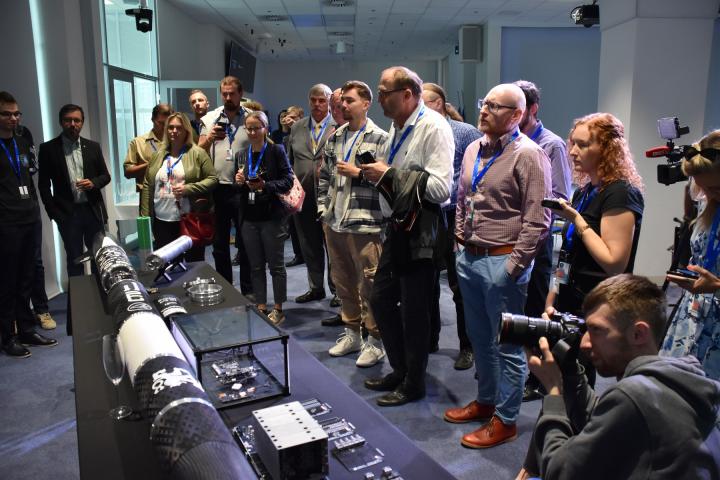
After the introduction of the presentation, the whole team expressed great appreciation for the creative technical work of doc. RNDr. Vojtěch Petráček, CSc., Rector of CTU. He thanked them for the energy they put into their projects during their demanding studies and also for spreading the good name of the University. He wished the rocket success in all competitions. Dean of the Faculty of Mechanical Engineering, Doc. Ing. Miroslav Španiel, CSc., reminded that Space Research is the youngest student team. It started working with faculty support only two years ago and has already achieved several successes. He then thanked the team members for their creative approaches to the project task and the sponsors for their support. He concluded by wishing the team many good starts in competitions as well as in their personal and professional lives.
The stage was then taken by Jan Lukačevič, a future space physicist from the Institute of Atmospheric Physics of the Academy of Sciences and the most followed popularizer of science on the networks. He recalled that he is a graduate of Faculty of Mechanical Engineering of the Czech Technical University in Prague and that ten years ago he and his friends dreamed of building rockets at the University. He expressed his joy that the dream has indirectly come true and the Space Research team is building working rockets.
At the end, Viktor Hais took the microphone. He introduced the team and the rocket with 1849 N thrust, which will be used for the EuRoc 2023 with the goal of reaching the 3 km apogee. He also informed those present about design details, major innovations and the development of the in-house measurement system. He concluded by thanking the team members for their hard work and for the long days and nights spent building the rocket, before unveiling the three-metre Illustration in all its glory. The participants of the presentation then toasted its "space" achievements with gusto.
Illustria measures 3,520 mm in length, 161 mm in diameter and its weight has reached to 28.82 kg. The biggest innovation in the design is the modularity provided by the RADAX couplers between each section of the rocket. This allows the flexibility to swap out a payload section or perhaps test an upgraded flight computer.
This project, together with the team's activities, contributes to the development of students' practical skills. The student team thus gives room for growth to future engineers and indirectly contributes to the development of the industry in the Czech Republic.
"The Illustria rocket is a great proof of the demand for space projects among Czech students, which allows us to jointly implement such challenging projects. With Illustria, our story is just beginning," says Viktor Hais, CTU Space Research team leader. Next, the team plans to reach the frontiers of space and would also like to send its nanosatellite into orbit.
CTU Space Research is the first university team in the Czech Republic dedicated to the development of high-performance rockets and other space technologies. It was founded in 2021 on the joint initiative of students and Prof. Michael Valášek, head of the Center of Aviation and Space research at Faculty of Engineering of the CTU in Prague. The main and now fulfilled vision of the team was to create a facility for students who want to pursue space projects and develop their practical skills while studying.
The team consists of students from various disciplines, mostly from the Czech Technical University in Prague. Their activities have been supported since their foundation by academic and industrial partners involved in development and production.
With this support, the team was able to reach an altitude of 32,600 metres with the Stratosat project, in which the team successfully tested advanced avionics in the stratosphere.
In addition to its own projects, the team participates in events for the general public, inspiring younger generations to study engineering and explore space.
